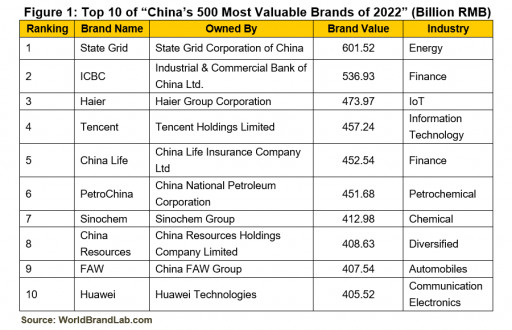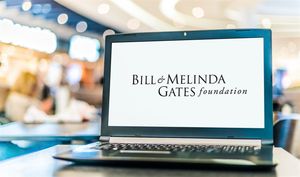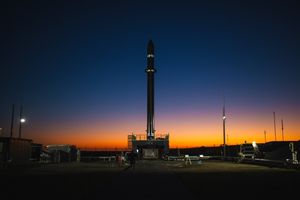NEW YORK - July 26, 2022 - (Newswire.com)
The "2022 China's 500 Most Valuable Brands" list (19th edition), exclusively compiled by World Brand Lab, was released on July 26, 2022, in Beijing. State Grid topped the list with a brand value of 601.52 billion RMB. Also occupying the top five on the list are Industrial and Commercial Bank of China (536.93 billion RMB), Haier (473.97 billion RMB), Tencent (457.24 billion RMB), and China Life (452.54 billion RMB). These brands have entered the world-class brand tier. Management gurus from Harvard, Yale, and Oxford attended the World Brand Summit and gave online speeches. They discussed the topic of Influence and Momentum: How to Rebuild the Brand Ecosystem with on-site guests.
In 2022, the total value of China's 500 Most Valuable Brands is 30,972.81 billion RMB, up 11.03 since last year. Steve Woolgar, Chairman of the World Brand Lab and Emeritus Professor of Marketing at University of Oxford, stated: "Brands are the image of a country. I hope that more people around the world can learn about China's stories through Chinese brands. In the past 16 years, I have witnessed the rapid growth of Chinese brands, some of which already have strong global influence. These brands include State Grid, Haier, Sinochem Group, China Resources, China Southern Power Grid, China Huadian Corporation, Wuliangye, Tsingtao Brewery, Beidahuang Group, XCMG, Hengli Group, GCL power Group, etc."
This is the 19th year that World Brand Lab has compiled a Chinese brand report. The entry threshold in 2004 was only 500 million RMB, while the average value of the top 500 brands was 4.94 billion RMB. In 2022, the entry threshold has increased to 3.17 billion RMB; the average value of the top 500 brands is over 61.95 billion RMB, an increase of 1,955.98%.
According to the analysis by World Brand Lab, the competitive strength of a region depends mainly on its comparative advantages, which are directly affected by brand benefits. Brand is an important symbol of the development of a region. The regional distribution of "China's 500 Most Valuable Brands" this year ranks Beijing first with 86 brands selected. Guangdong and Shandong have 84 and 46 brands, respectively, ranking second and third. Brands on the list can be divided into national and global brands according to the scope of influence of these selected brands. There are 438 brands with national influence on the list, accounting for 87.60% of the total, and 62 brands (12.20%) with global influence, which represents a slight increase from last year.
Although the pandemic did not halt the overall upward trend of Chinese brand value, the number of brands in industries such as aviation, travel services, textile and apparel, real estate, and retail has dropped significantly compared with last year, while industries with inelastic demand such as automobiles, chemical, and agriculture have increased. The "2022 China's 500 Most Valuable Brands" list contains brands from 26 industries, including food and beverage, light industry, building materials, media, textile and apparel, medicine and machinery. The food and beverage industry remains the sector with the most brands on the list, counting 84 and representing 16.80% of the list. The industries ranked second to fifth are, light industry (49), building materials (38), media (34), and information technology (32). A total of 69 Chinese brands were worth more than 100 billion RMB this year, whereas last year the number was 57.
The topic for today's summit is "Influence and Momentum: How to Rebuild the Brand Ecosystem." Pierre Chandon, Professor of Marketing at the INSEAD, indicated that brand influence and momentum are important for branding. Brand momentum allows customers to carry over some of the goodwill from one product to the next and allows the brand to be resilient and continue to succeed year after year. And to build a resilient brand ecosystem, first, brands should not promise what they cannot deliver; second, they must be authentic and deliver the brand's promise; third, they must evolve without betraying the brand's identity.
A joint team from World Brand Lab and Superfinance identified an increasing correlation between brand value and ESG performance. Elie Ofek, a professor of marketing at the Harvard Business School, concluded that environmental factors, including the customers, competition, company, collaborators, and context keep changing. Brands must be ready to rebuild, remodel, and reimagine their position. The key building blocks are the "(C)RED" Framework, which stands for "Relevant, Enduring and Differentiated." As an adjunct to the RED model, "C" stands for "credible," which means that the brands must be authentic and believable in order to generate trust. Therefore, rebuilding a (C)RED brand helps to influence customers and grow momentum.
Ravi Dhar, a professor of marketing at the Yale School of Management, noted that inflation is one of the challenges that global economies are facing today, especially in Europe and the U.S. In the context of COVID-era inflation, on the one hand, consumers' perceptions of the market can be biased by media coverage; on the other hand, consumer behaviors are also changing. First, consumers will spend more effort planning and thereby reduce impulse purchases. But at the same time, consumers are more willing to try new products. Second, brands can benefit from the fact that consumers are less sensitive to "smaller product sizes" than to "increased prices." Third, installment payments are more popular during inflationary periods.
Martin Kilduff, a professor of Organizations and Innovation at the University College London (UCL), stated that, in a social network, rivalry is essentially competing for allies that provide resources to enhance reputation. Social networks are pipes through which resources such as information, materials, and employees flow. Social networks are also prisms through which reputation is discerned. But in fact, people's perception of social networks is biased, and the connections between people, brands, and organizations are often distorted.
Haisen Ding, founder and CEO of World Executive Group and World Brand Lab, has remarked that brand, as the centralized embodiment of a company's core competitiveness, is not only an intangible asset but also a complex ecosystem. A brand ecosystem is how a brand creates a perfect global chain through its various interrelated products and services, from producers and integrators to consumers, all working together around a brand's philosophy and reputation. In the face of the uncertain global COVID epidemic and geopolitical risks, Chinese brands urgently need to create a virtuous brand ecosystem in the process of globalization.
Professor Steve Woolgar, Chairman of the World Brand Lab, concluded that over the last 10 years, Chinese manufacturing has made impressive achievements in global market competition. However, in order to capture and consolidate the high-end market, Chinese brands must create a world-class brand ecosystem that engages stakeholders in all scenarios of Chinese brand building.
World Brand Lab is an international brand value research institute wholly owned by World Executive Group, the world's leading digital business and strategy consulting firm. World Brand Lab was co-founded on the initiative of Nobel Laureate Robert Mundell, who served as its first chairman. The experts and consultants of World Brand Lab hail from Harvard University, Yale University, MIT, Columbia University, University of Oxford, University of Cambridge, INSEAD, and other top universities around the world. Its research results have become an important basis for intangible asset valuation in the process of M&A of many enterprises.
Press Contact
World Brand Lab
+1-212-208-1429
info@worldbrandlab.com
http://www.worldbrandlab.com
Press Release Service by Newswire.com
Original Source: World Brand Lab Released 'China's 500 Most Valuable Brands of 2022'






